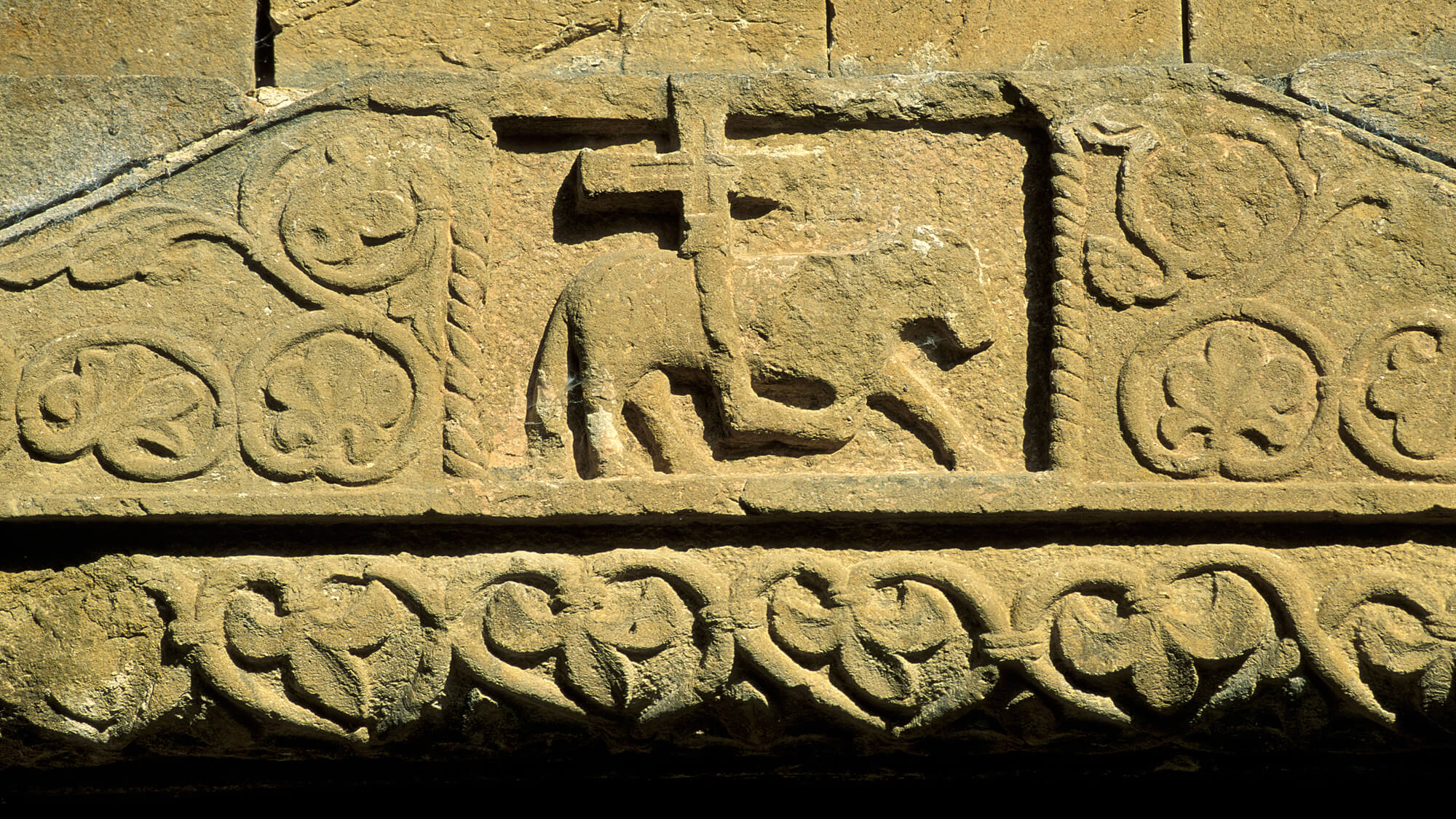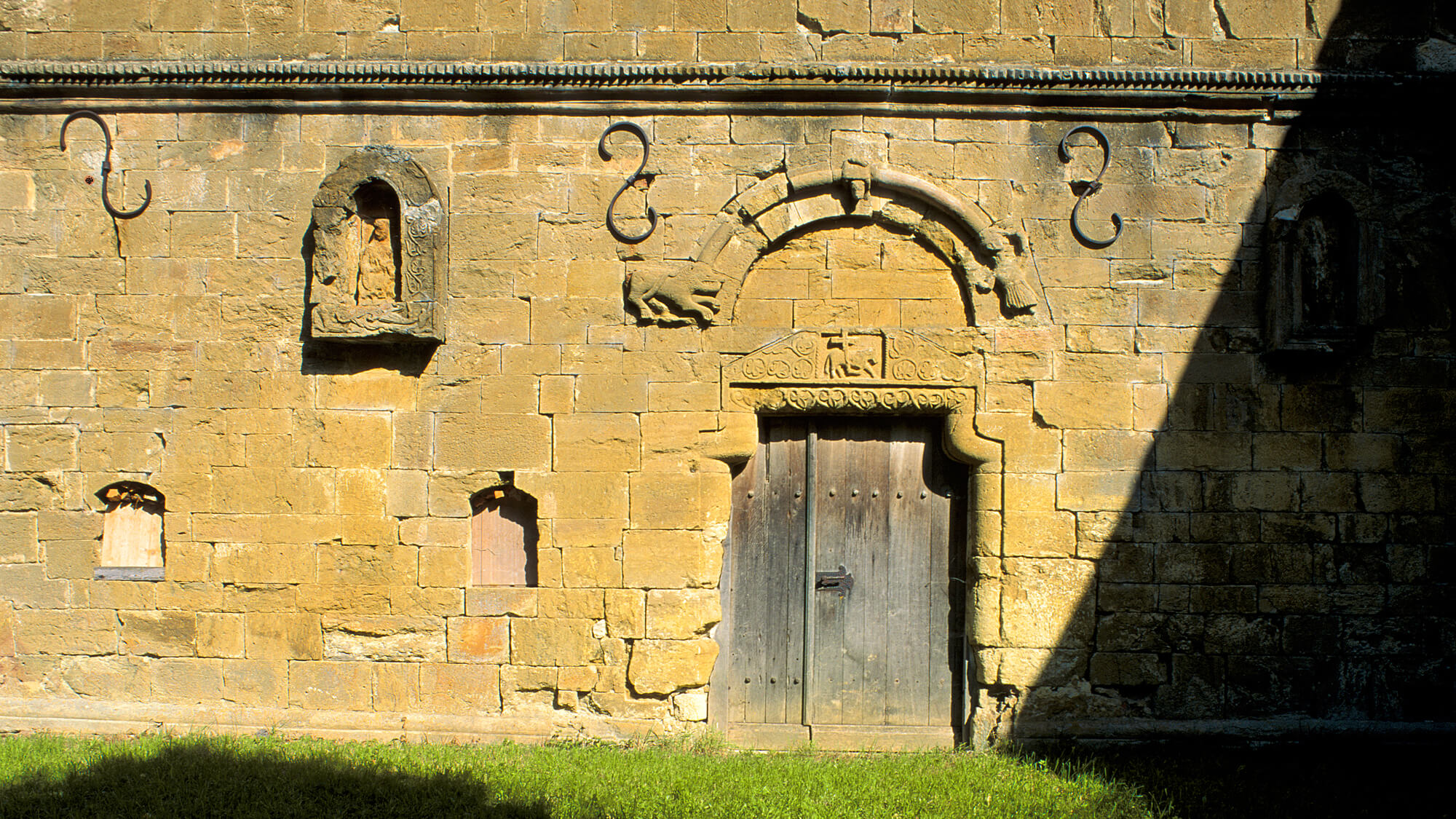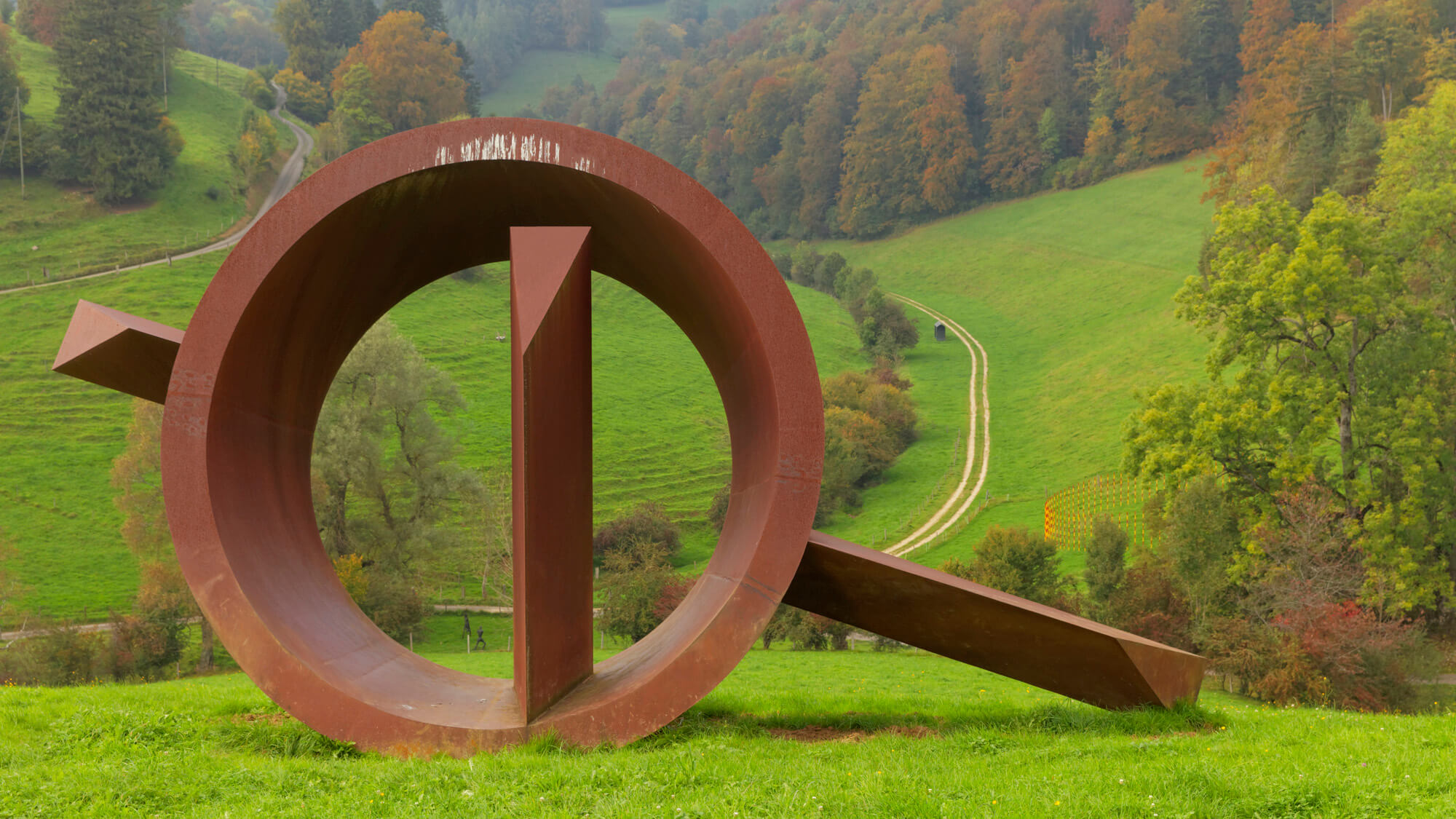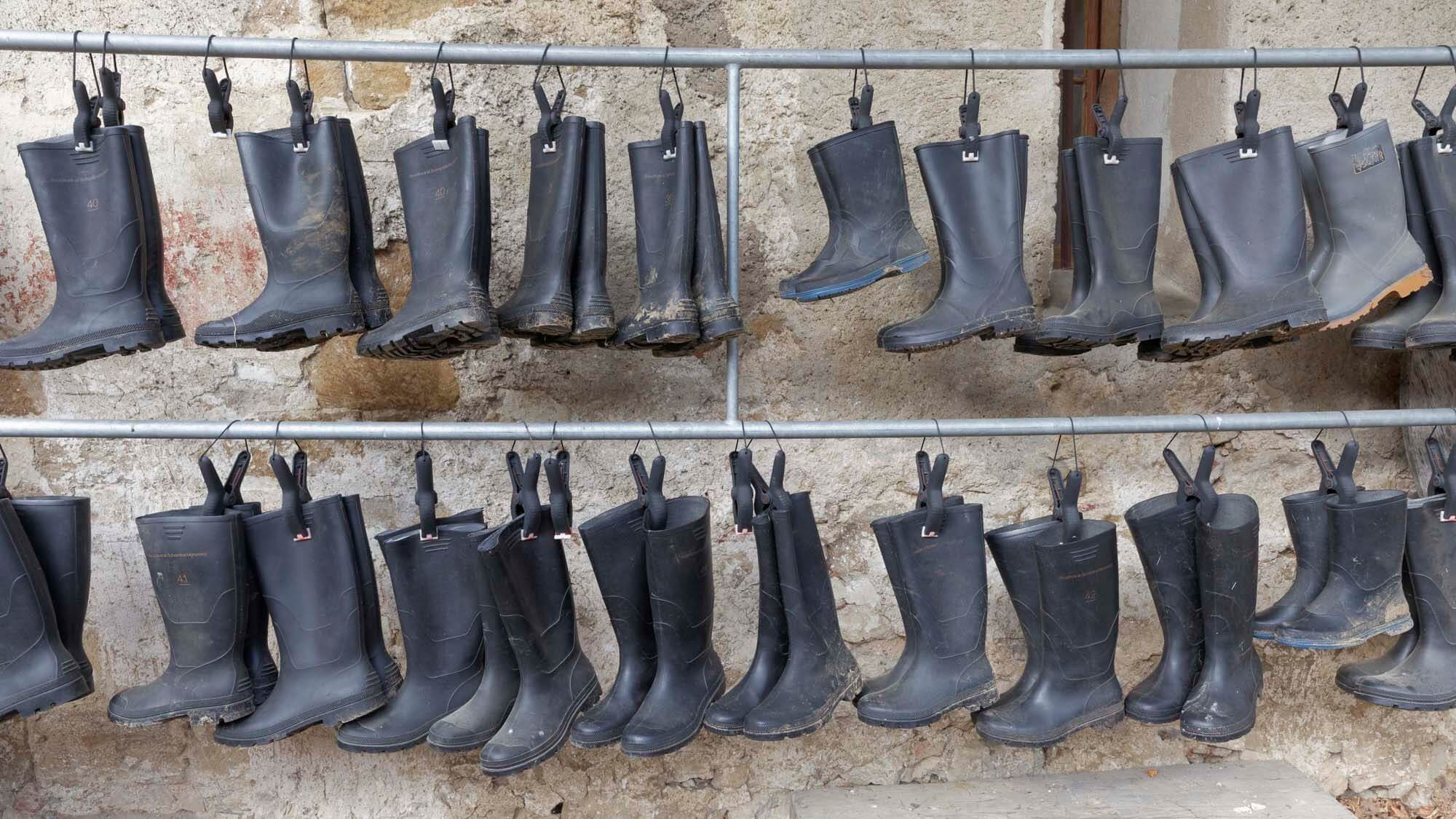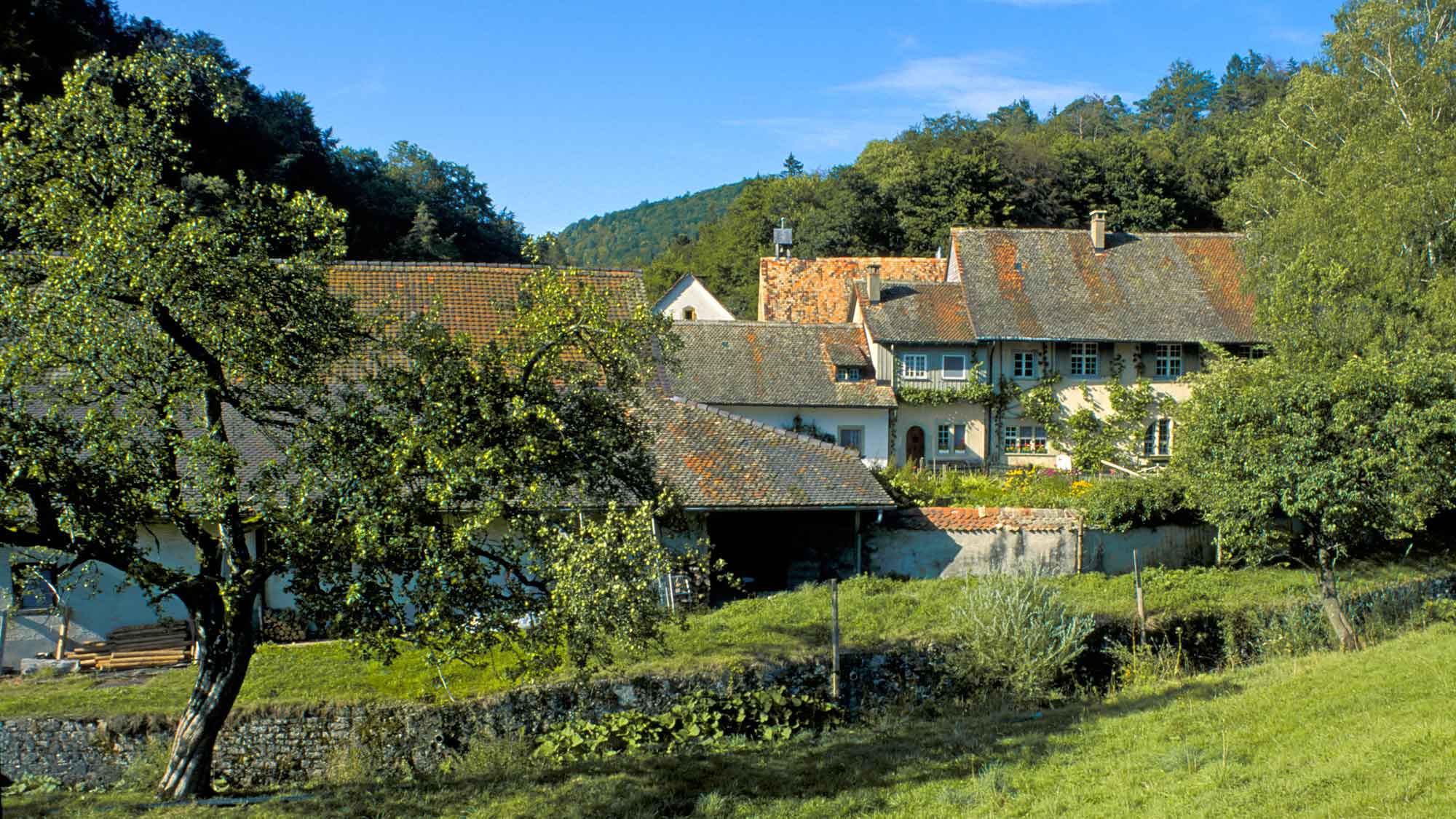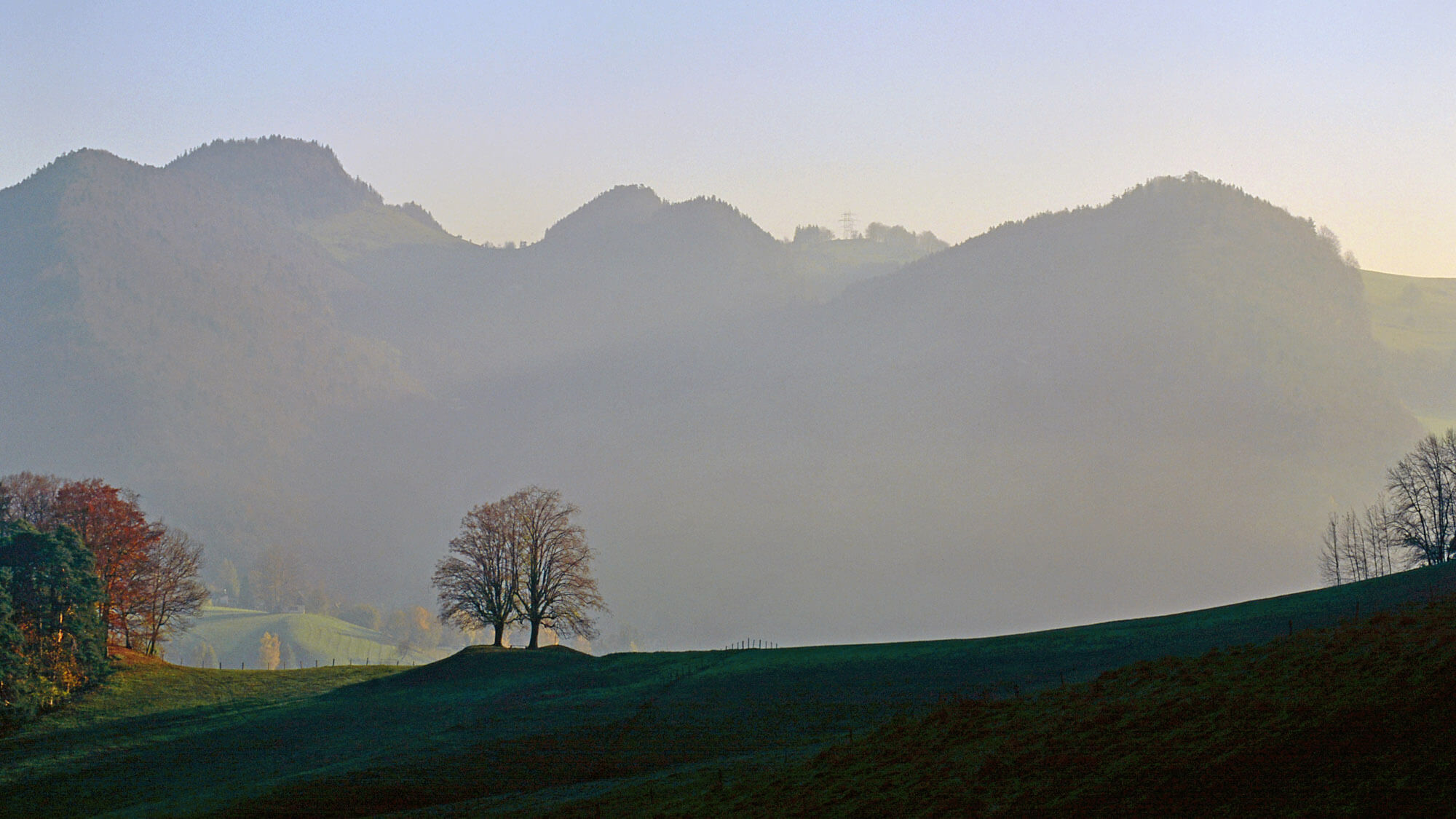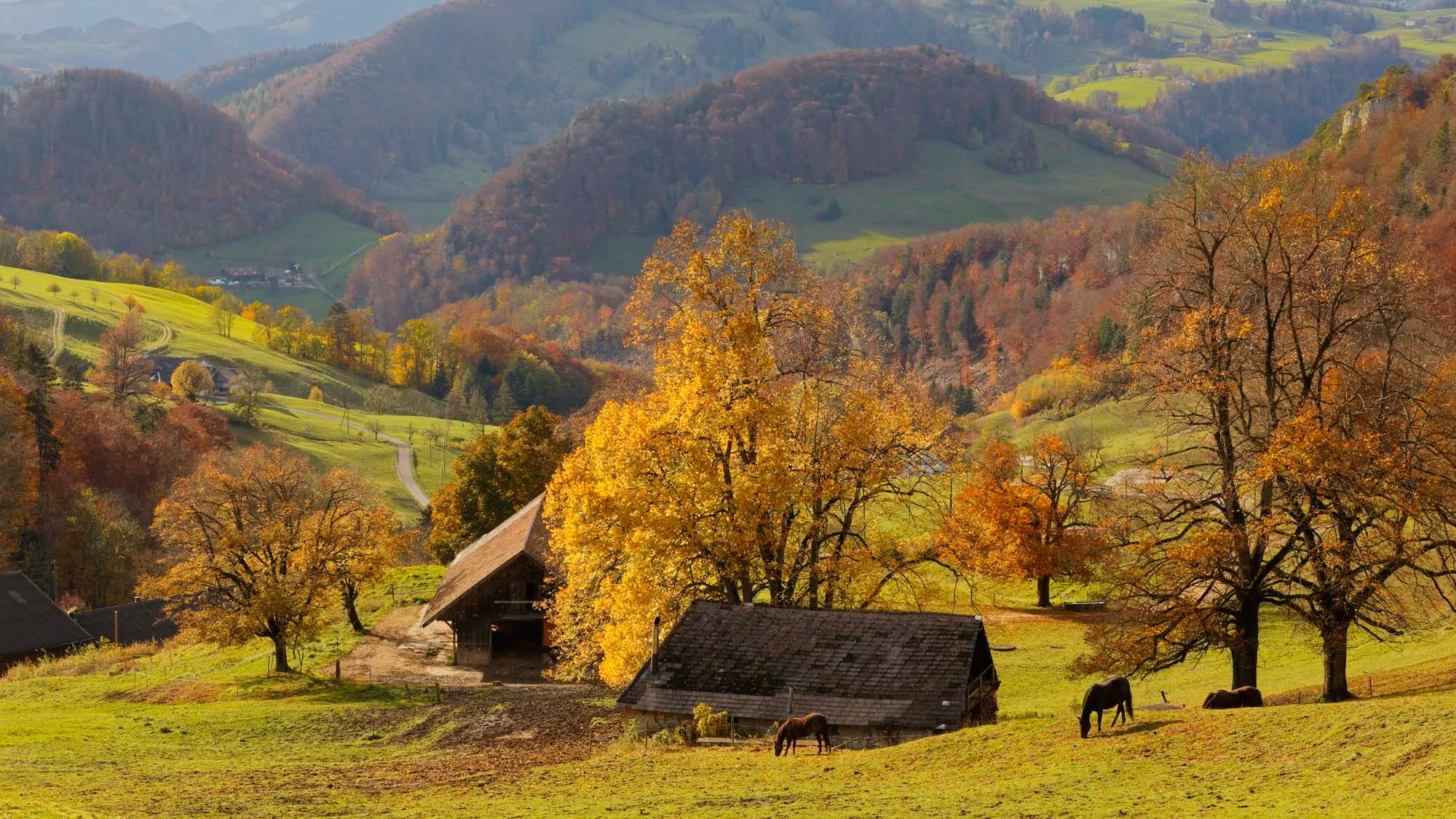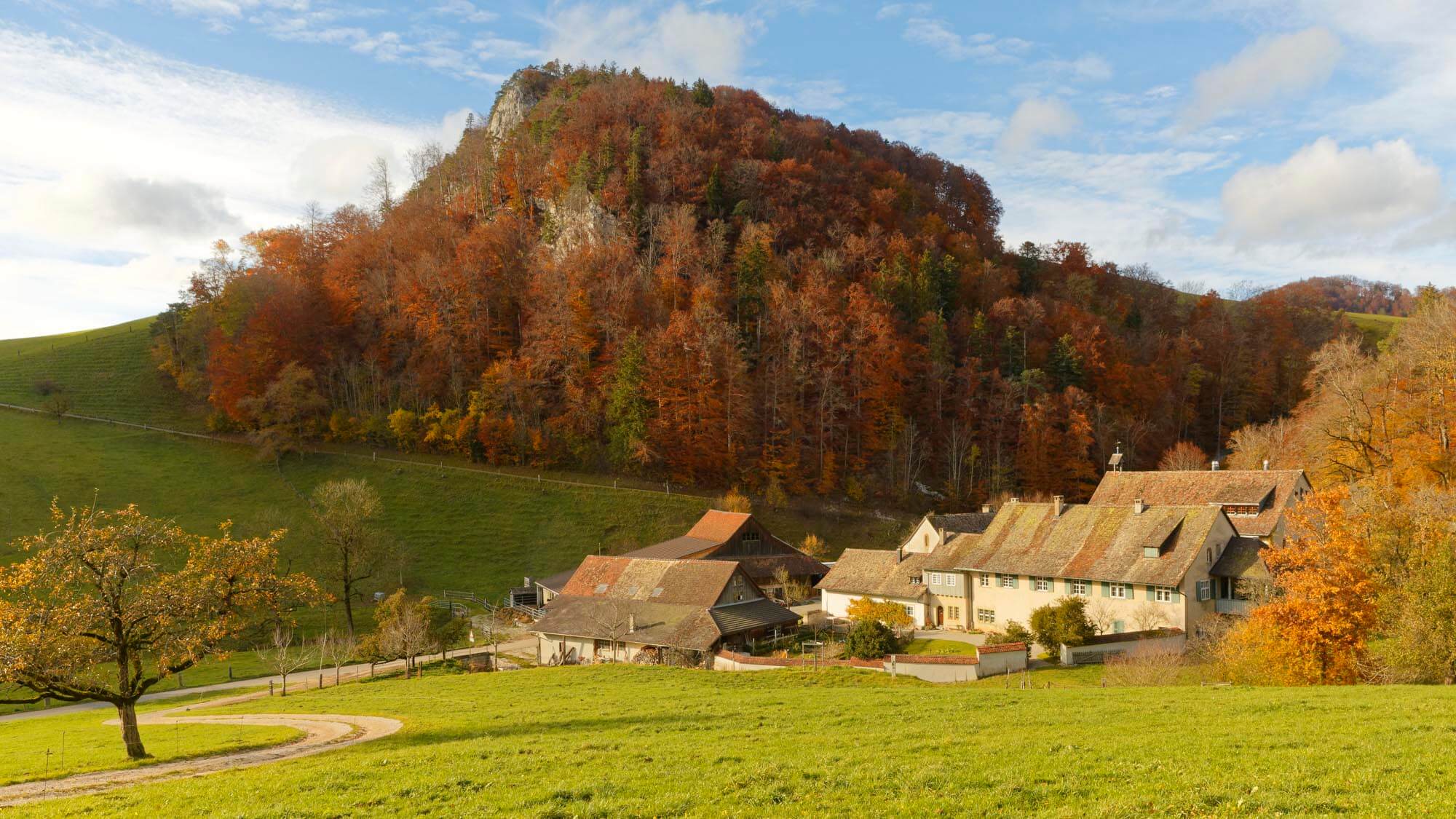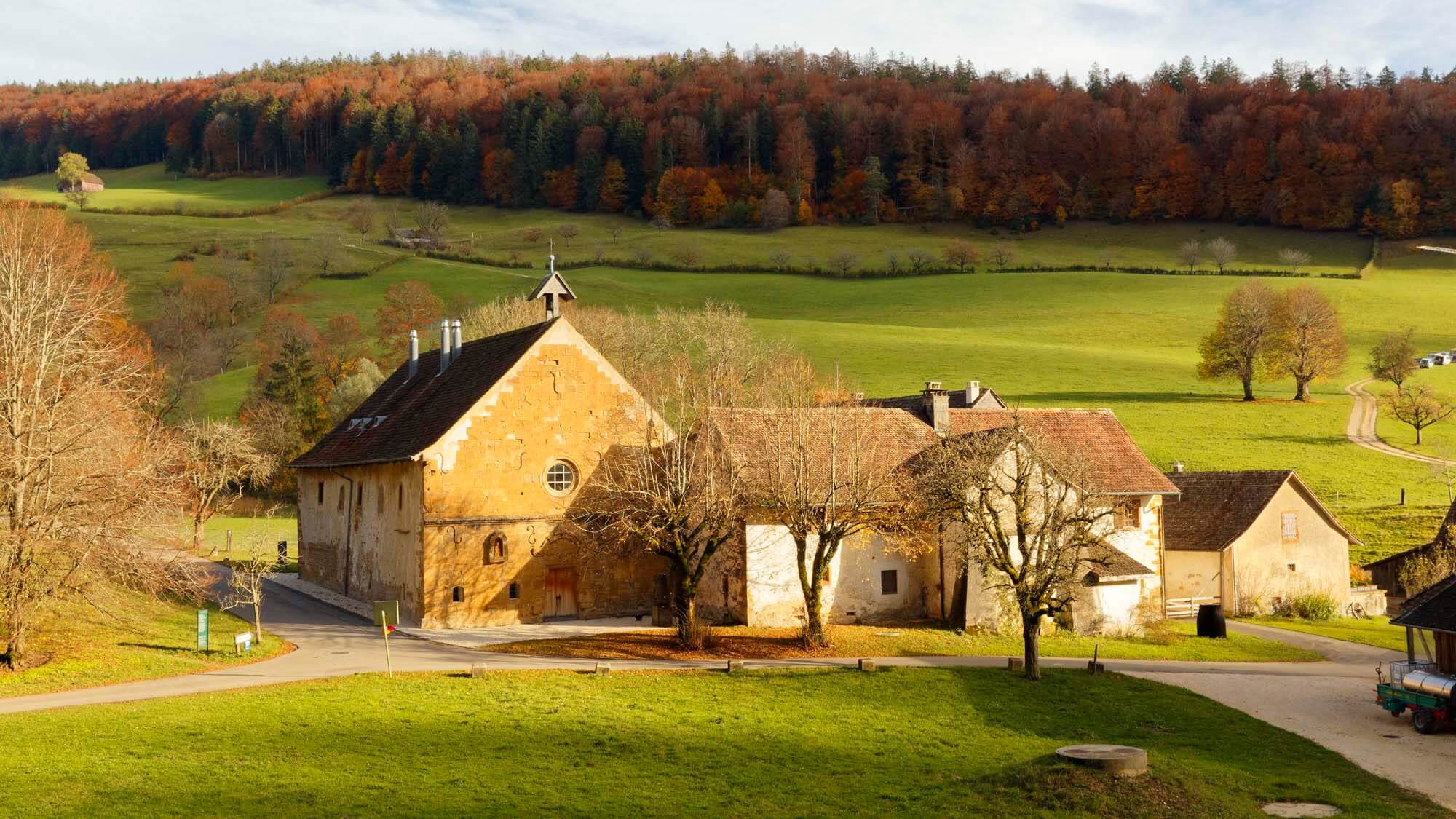Romanesque symbols and contemporary art
Embedded in an almost untouched mountain landscape, at the foot of the little-used pass road on Oberen Hauenstein, lies the Schönthal Monastery, which has been awakened to new life. The walk from the village of Langenbruck takes just under a quarter of an hour. As if enchanted, you stop in front of the mysterious main portal of the Romanesque church and try to interpret the symbols that a stonemason attached here around eight hundred years ago.
Schoenthal was originally a double monastery, a religious community of men and women who lived in separate houses. Already in 1266 there was only mention of a Benedictine convent. However, numerous pilgrims flock to Schönthal, especially to the Christiania relics that were kept here. When the plague broke out in Kleinbasel in 1463, the cathedral and council of Basel organized a procession in which 1,500 people took part. When the cantons separated Basel-Stadt and Basel-Landschaft in 1833, the Schönthalgut was sold, and since 1989 it has been privately owned. The new owner has realised his ‹Culture at Schönthal› project for contemporary sculpture. He has revitalised the wonderful place with exhibitions in the church and with hostel and conference rooms. Those who walk the sculpture path outdoors will find themselves under the spell of an old fairy tale high up in the forest that will make you shiver.

